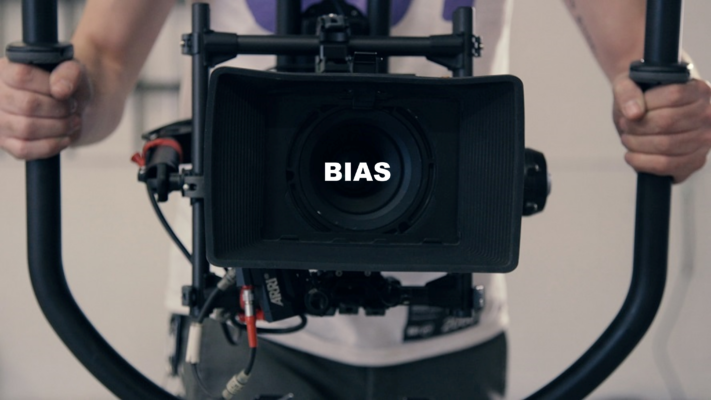A UT Austin Journalism course has abandoned all pretense and objectivity. No more debate about whether the mostly liberal media is, in fact a partisan propaganda arm of the central planners and progressive plotters. They’ve embraced “be you.”
That means being partisan voices for whatever the latest thing is.
The “Solidarity Journalism Initiative” at University of Texas at Austin teaches students to “convey outrage” and and abandon neutrality with the funding of top tech companies and George Soros’ Open Society Foundations.
The initiative, which is part of the University of Texas at Austin’s Center for Media Engagement, “helps journalists, journalism educators, and journalism students improve coverage of marginalized communities,” according to its website.
Marginalized communities suggest minority communities, but I feel comfortable saying that’s not true. No one reporting in, about, or from any of these “jurisdictions” is going to be talking about their white minority populations.
“List of U.S. communities with African-American majority populations in 2020”
Population over 100,000
- Birmingham (2020, 68.12%)
- Montgomery (2020, 59.99%)
- Mobile (2020, 51.06%)
Population 25,000 to 99,999
- Bessemer (2020, 69.59%)
Population 10,000 to 24,999
- Fairfield (2020, 94.74%)
- Forestdale CDP (2020, 78.65%)
- Prichard (2020, 84.58%)
- Selma (2020, 82.12%)
Population 5,000 to 9,999
- Demopolis (2020, 54.02%)
- Grayson Valley CDP (2020, 51.97%)
- Lanett (2020, 58.79%)
- Midfield (2020, 84.03%)
- Tuskegee (2020, 94.34%)
Population 1,000 to 4,999
- Aliceville (2020, 77.12%)[1]
- Brighton (2020, 77.24%)
- Brundidge (2020, 67.34%)
- Camden (2020, 58.48%)
- Camp Hill (2020, 86.98%)
- Clayton (2020, 62.38%)
- Eutaw (2020, 81.99%)
- Evergreen (2020, 59.52%)
- Fort Deposit (2020, 76.90%)
- Georgiana (2020, 72.51%)
- Goodwater (2020, 75.29%)
- Greensboro (2020, 67.76%)
- Lipscomb (2020, 61.79%)
- Livingston (2020, 58.47%)
- Marion (2020, 68.83%)
- Mount Vernon (2020, 74.15%)
- Selmont-West Selmont CDP (2020, 94.53%)
- Union Springs (2020, 75.88%)
- Uniontown (2020, 90.32%)
- York (2020, 89.56%)
Population 100 to 999
- Akron (2020, 88.44%)
- Autaugaville (2020, 66.79%)[2]
- Beatrice (2020, 66.18%)
- Boligee (2020, 89.70%)
- Boykin (2020, 93.75%)
- Colony (2020, 83.33%)
- Edgewater CDP (2020, 69.57%)
- Epes (2020, 94.49%)
- Five Points (2020, 52.63%)
- Forkland (2020, 87.87%)
- Franklin (2020, 80.17%)
- Geiger (2020, 70.97%)
- Gordon (2020, 64.63%)
- Gordonville (2020, 94.29%)
- Hayneville (2020, 83.86%)
- Hillsboro (2020, 82.80%)
- Hissop CDP (2020, 74.64%)
- Hobson City (2020, 80.63%)
- Hurtsboro (2020, 53.87%)
- Lisman (2020, 92.04%)
- Macedonia (2020, 87.14%)
- Midway (2020, 93.59%)
- Mosses (2020, 96.40%)
- Newbern (2020, 63.91%)
- Nixburg CDP (2020, 66.87%)★
- North Courtland (2020, 96.07%)
- Pine Hill (2020, 53.56%)
- Pickensville (2020, 61.40%)
- Shorter (2020, 70.13%)
- Union (2020, 97.78%)
- Vredenburgh (2020, 92.79%)
- White Hall (2020, 94.17%)
- Yellow Bluff (2020, 98.56%)
Population under 100
- Catherine CDP (2020, 56.92%)
- Dayton (2020, 64.29%)
- Emelle (2020, 81.25%)
- McMullen (2020, 87.50%)
- Memphis (2020, 82.76%)
- Ridgeville (2020, 59.04%)
Much like the mantra that there is no such thing as racism against whites (or Asians unless it is by whites), the cultural revolution will not brook the notion of white minorities. Not here, not in South Africa, not anywhere.
And I’m not implying that people who have majorities in these places are not marginalized for any number of reasons, including the color of their skin. The point is that any pretense at reporting the world objectively has long been thought lost, and UT Austin is simply coming out of the closet.
